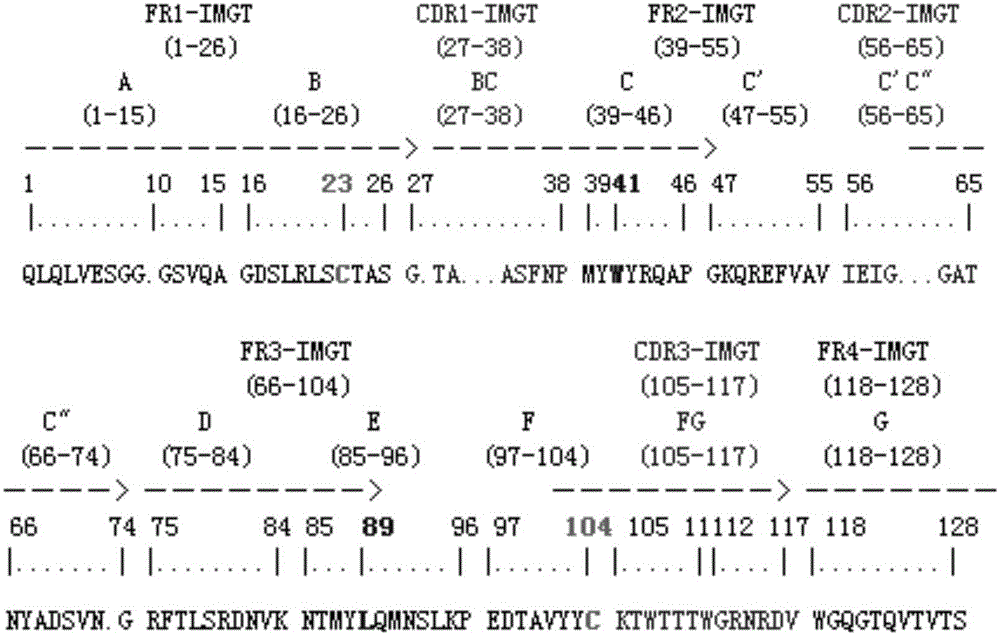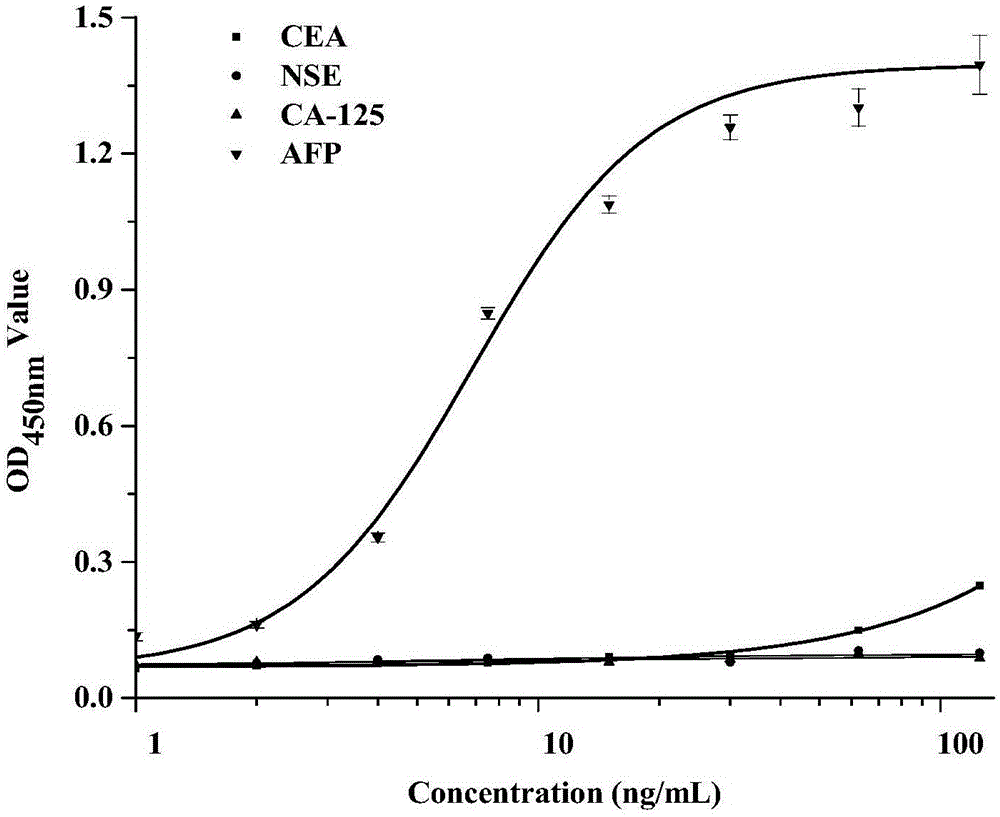AFP nanometer antibody A83 based on AFP antigen
A nanobody and antigen technology, applied in the biological field, can solve the problems of expensive antibody and antigen standards, and achieve the effects of small molecular weight, high application value and unique structure
- Summary
- Abstract
- Description
- Claims
- Application Information
AI Technical Summary
Problems solved by technology
Method used
Image
Examples
Embodiment 1
[0022] Example 1. Construction of camel-derived immune single domain heavy chain antibody library
[0023] 1) Immunity of alpacas:
[0024] A healthy adult alpaca was selected and immunized by intradermal and subcutaneous multi-point injections on the back. For the first immunization, Freund's complete adjuvant was used, and the dose of immunogen was 1 mg; on the 28th day, the second immunization was performed with Freund's incomplete adjuvant. The dose of immunogen is 0.5 mg, three immunizations on the 49th day, Freund's incomplete adjuvant, the immunogen dose is 0.25 mg; on the 70th day, four immunizations, Freund's incomplete adjuvant, the immunogen dose is 0.25 mg. On the seventh day after the third booster immunization, the peripheral blood of the alpaca was collected for the construction of a phage display library.
[0025] 2) Separation of camel-derived white blood cells: add lymphocyte separation solution to the centrifuge tube, then add blood samples, centrifuge at 7...
Embodiment 2
[0049] Example 2. Affinity panning and identification of AFP Nanobodies
[0050] 1) Biotinylation of AFP as target molecule
[0051] A. Dissolve 2mg of target protein in 1mL of 50mM NaHCO 3 (pH8.5);
[0052] B. Before use, dissolve 1mg of Sulfo-NS-LC-biotin in 1mL of water, shake and mix. Add 74 μL of this solution to the target protein solution;
[0053] C. Place the tube on ice for 2 hours;
[0054] D. Dialyze to remove unreacted biotin, dialyze with PBS buffer, change the dialysate at least twice;
[0055] E. Quantification of biotinylated proteins using NaNoDrop.
[0056] 2) panning
[0057] With streptavidin (100 μg / mL streptavidin dissolved in 0.1M NaHCO 3 (pH8.6)) coated with microtiter plate, 4 ℃ overnight. After washing 4 times with PBST (10mMPBS, 0.5% Tween-20 (v / v)), add 300 μL of 3% BSA-PBS to block for 1 hour at 37°C (the blocking solution should contain 0.1 μg / mL streptavidin to bind BSA) Biotin contained in the blocking solution), and the phage was pre-...
Embodiment 3
[0067] Example 3. The sequencing of the gene encoding the AFP Nanobody and the determination of its amino acid sequence
[0068] The positive phage clones identified by double-antibody sandwich ELISA were subjected to DNA sequencing, and the amino acid sequence could be obtained according to the DNA sequencing results and the codon table.
PUM
 Login to View More
Login to View More Abstract
Description
Claims
Application Information
 Login to View More
Login to View More - R&D
- Intellectual Property
- Life Sciences
- Materials
- Tech Scout
- Unparalleled Data Quality
- Higher Quality Content
- 60% Fewer Hallucinations
Browse by: Latest US Patents, China's latest patents, Technical Efficacy Thesaurus, Application Domain, Technology Topic, Popular Technical Reports.
© 2025 PatSnap. All rights reserved.Legal|Privacy policy|Modern Slavery Act Transparency Statement|Sitemap|About US| Contact US: help@patsnap.com



